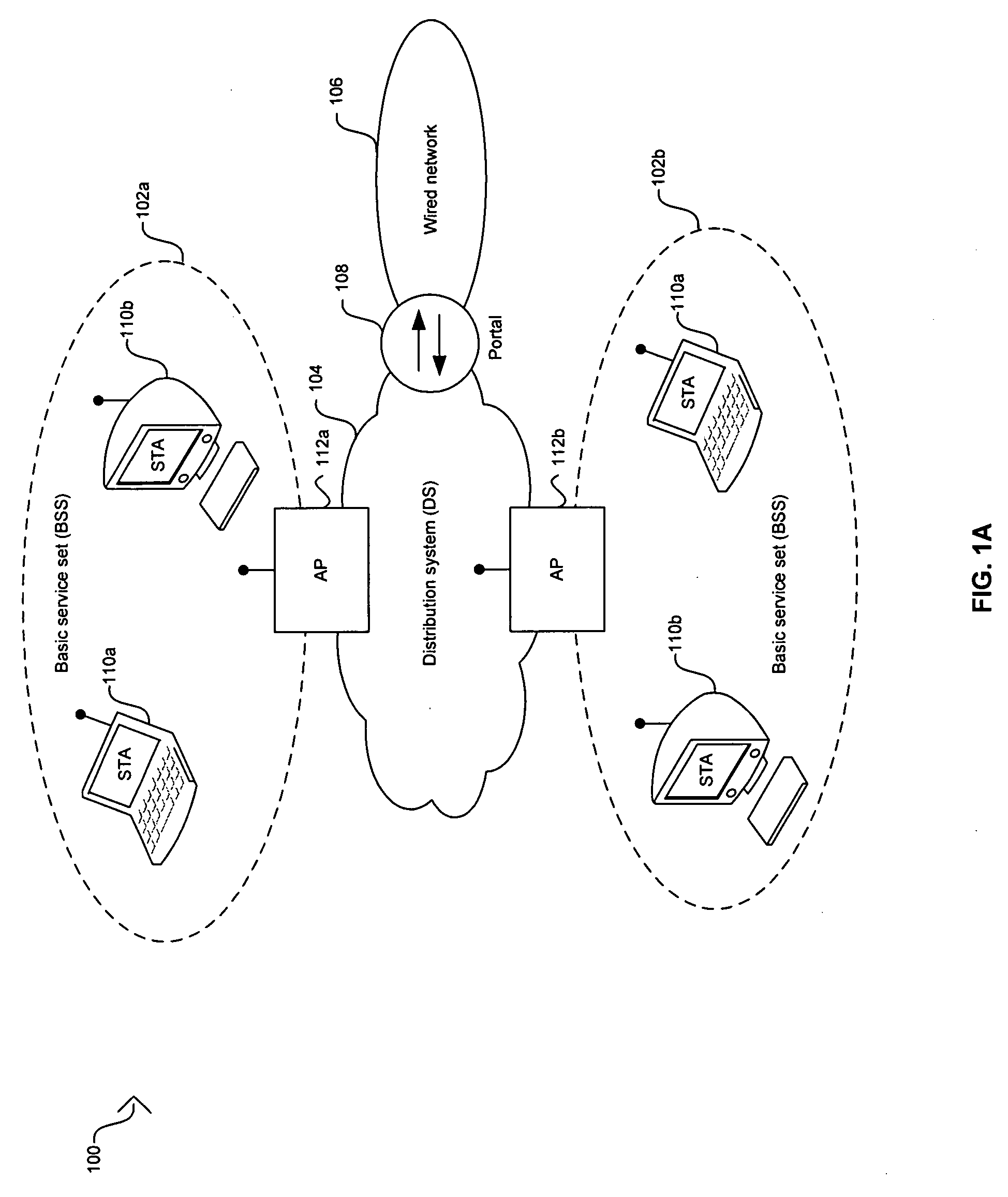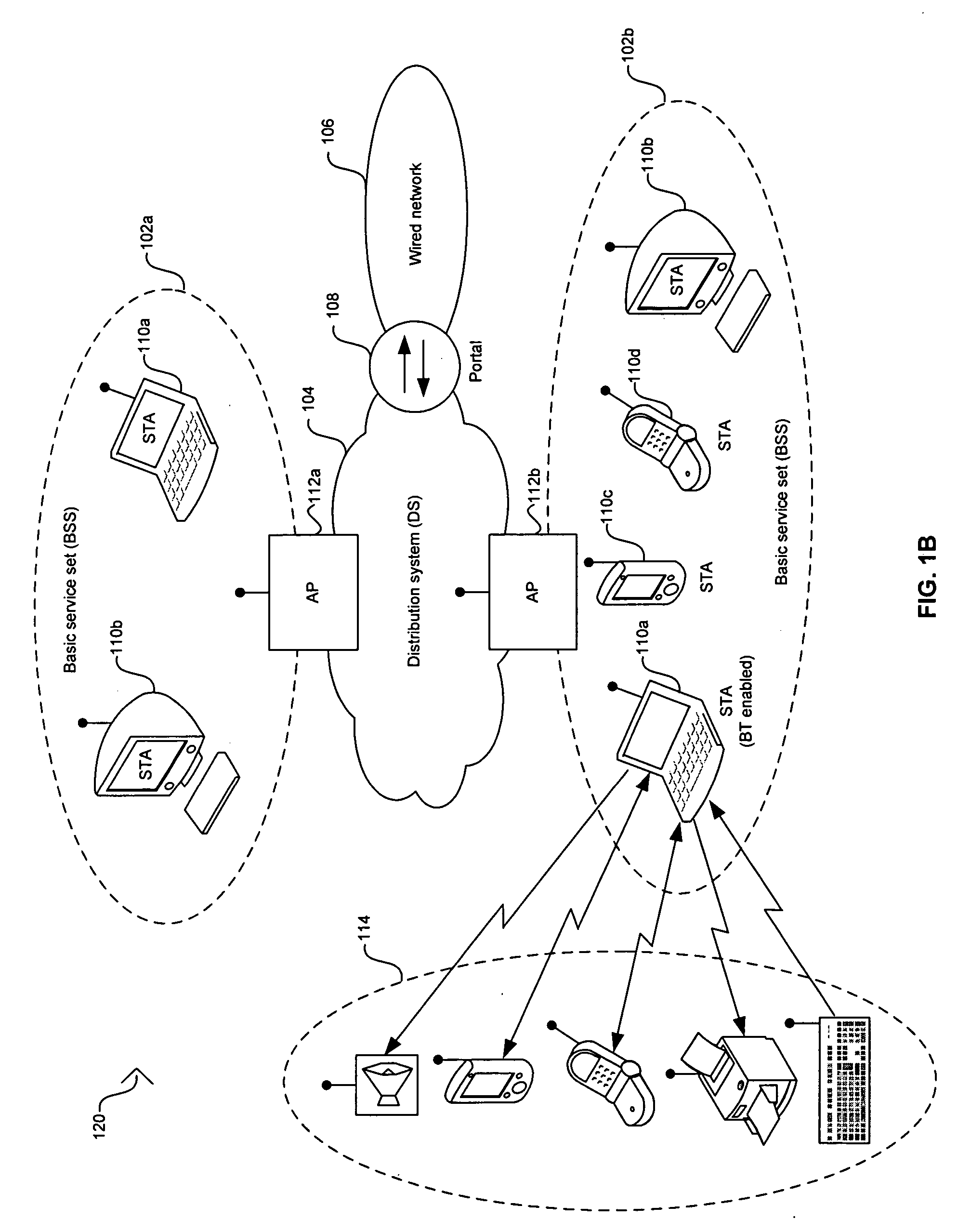Method and apparatus for enabling simultaneous VoWLAN and Bluetooth audio in small form factor handheld devices
a handheld device and bluetooth technology, applied in the field of communication systems, can solve the problems of significant interference or blocking of signals, interference effects of different types, and significant interference between operating devices
- Summary
- Abstract
- Description
- Claims
- Application Information
AI Technical Summary
Benefits of technology
Problems solved by technology
Method used
Image
Examples
Embodiment Construction
[0030] Certain aspects of a method and system for providing wireless communication may comprise a single integrated circuit (IC) that handles communication for at least a Bluetooth (BT) connection and a Wireless Local Area Network (WLAN) connection by controlling transmission of acknowledgement signals based on a measured voice quality of one or both of the BT connection and the WLAN connection. The transmission of the acknowledgement signals communicated from the mobile station to an access point may be controlled. A BT priority signal may be asserted if data to be transmitted comprises high quality voice (HV3) data. The transmission of the acknowledgement signals may be controlled by raising a priority of an asserted WLAN priority signal higher than a priority of the asserted BT priority signal. The voice data may be transmitted via high quality voice (HV3) frames over the BT connection based on the asserted WLAN priority signal.
[0031]FIG. 1A is a block diagram of an exemplary WL...
PUM
 Login to View More
Login to View More Abstract
Description
Claims
Application Information
 Login to View More
Login to View More - R&D
- Intellectual Property
- Life Sciences
- Materials
- Tech Scout
- Unparalleled Data Quality
- Higher Quality Content
- 60% Fewer Hallucinations
Browse by: Latest US Patents, China's latest patents, Technical Efficacy Thesaurus, Application Domain, Technology Topic, Popular Technical Reports.
© 2025 PatSnap. All rights reserved.Legal|Privacy policy|Modern Slavery Act Transparency Statement|Sitemap|About US| Contact US: help@patsnap.com



